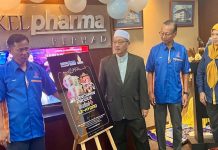Singapore is set to lift its lockdown measures as citizens slowly return to normalcy. The ‘circuit breaker’, as Singapore’s lockdown measures were known, are to be lifted Tuesday in a phased reopening. The reopening will allow students back in the classroom and 75 percent of the economy to resume operations.
Among the businesses allowed to operate again are dental clinics, chiropractors and air conditioning servicing. Marriage ceremonies, funerals and wakes can now be held but with a maximum of 10 people attending. Places of worship are open for private visits by up to five households at once. Congregational worship services, religious classes and cell group meetings conducted in person remain suspended.
Singapore’s Changi Airport – the 18th-busiest airport in the world – is also slowly coming back to life. Two of its four terminals remain closed but travellers can once again transit through Singapore on journeys elsewhere.
Despite this, many restrictions are still in place. Masks are mandatory in public, while people are encouraged to go out only when truly necessary. Only graduating pupils can attend school every day, while others will rotate weekly between the classroom and continuing with home-based learning. Close-contact businesses like nail salons, bars, cinemas, retail shops and gyms will have to wait until Phase Two to reopen.
The first phase of the reopening is part of a three-phase approach: Phase One (Safe Re-opening), planned to be done in two-incubation periods; followed by Phase Two (Safe Transition), and Phase Three (Safe Nation). Phase One is expected to last for a minimum of 28 days.
Based on experience with past pandemics, opening up the country too quickly could lead to a second wave of infections that is even worse than the first, said Professor Teo Yik Ying, dean of the Saw Swee Hock School of Public Health at the National University of Singapore. He said, “There will be countries that will definitely experience a second wave of infection. And we saw from experience with the [1918] Spanish flu that the second wave can be much more deadly than the first wave.”
There were 408 new cases on Monday, bringing the total to more than 35,000 infections, with about 93 percent of these among its migrant worker population.
Prime Minister Lee Hsien Loong urged Singaporeans to remain cautious and vigilant after exiting the circuit breaker, as dealing with the coronavirus pandemic is “a marathon, not a sprint”. He wrote in a Facebook post, “Please keep your guard up. Maintain safe distancing, wear masks when outdoors and at work, watch your personal hygiene and wash hands frequently. Avoid crowds and gatherings.”
“If we all do these, then life can go on more or less normally after the circuit breaker. We don’t want COVID-19 cases to spike up again, and be forced to tighten up once more,” he continued.














